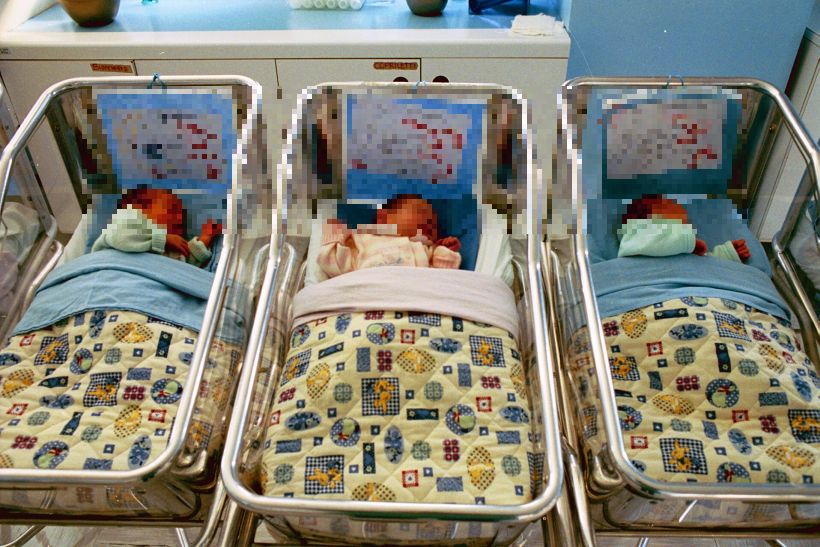ROME (ITALPRESS) – In 2023, there will be 379,890 births in the resident population, 13,000 fewer than in 2022 (-3.4 percent), according to Istat data. For every 1,000 residents in Italy, just over six children are born. This decrease, which implies a new downward overshoot of the record low birth rate, is part of a long-standing trend. Compared to 2008, when the number of live births exceeded 576,000, representing the highest value since the early 2000s, there is an overall loss of 197,000 (-34.1 percent). The systematic reduction noted during this period was annually about 13 thousand, corresponding to an average annual rate of change of 2.7 per thousand.
The decline in births, in addition to the now stable low tendency to have children (1.2 children per woman in 2023), is also caused by structural changes in the female population of childbearing age, conventionally set between 15 and 49.
There are fewer and fewer women in this age group. Today, those born in the baby-boom years (from the second half of the 1960s to the first half of the 1970s) have now passed the conventional 49-year threshold.
A large proportion of those still of childbearing age belong to the so-called baby-bust era, that is, they were born during the 20-year period from 1976 to 1995 during which fertility dropped from over 2 to the all-time low of 1.19 children per woman.
The decrease in births is almost entirely attributable to the decline in births to couples whose parents are both Italian, accounting for more than three-quarters of total births. Births to Italian parents, at 298,948 in 2023, are about 12,000 fewer than in 2022 (-3.9%) and 181,000 fewer than in 2008 (-37.7%). In contrast, births to couples in which at least one of the parents is a foreigner are 80,942, down 1.5 percent from 2022 and 25.1 percent from 2012, when the number peaked. Especially decreasing were births to parents who are both foreigners, down 3.1 percent on 2022 and 35.6 percent in comparison with 2012 (-28,447).
The denatality continues in 2024: according to the first provisional data referring to the January-July period, births decreased by 4,600 units (-2.1%) compared to the same period in 2023. The male name most chosen by parents nationwide is Leonardo, which maintains the primacy gained in 2018; in second place, for the first time on the podium, is Edward, who gains two positions over 2022. Stable Thomas in third place, while Francis exits the podium, losing two positions to fourth place. Unchanged situation, compared to 2022, in the first two positions of female names: stable Sofia in first position and Aurora in second; in third position Ginevra, who rises from fourth, while in fourth position takes her place Vittoria. Giulia, coming off the third position on last year’s podium, slips to fifth.
In 2023, births residing in Italy registered with the paternal and maternal double surname are 6.2 percent of the total, up 3.8 percentage points on 2020. Married parent couples register the lowest percentage of double surname attribution, 4.9 percent in 2023. The values are highest for never-married couples (8 percent) and for those in which at least one of the two parents had a previous marriage (7.8 percent).
(ITALPRESS).
-Photo: Photogram Agency-.

